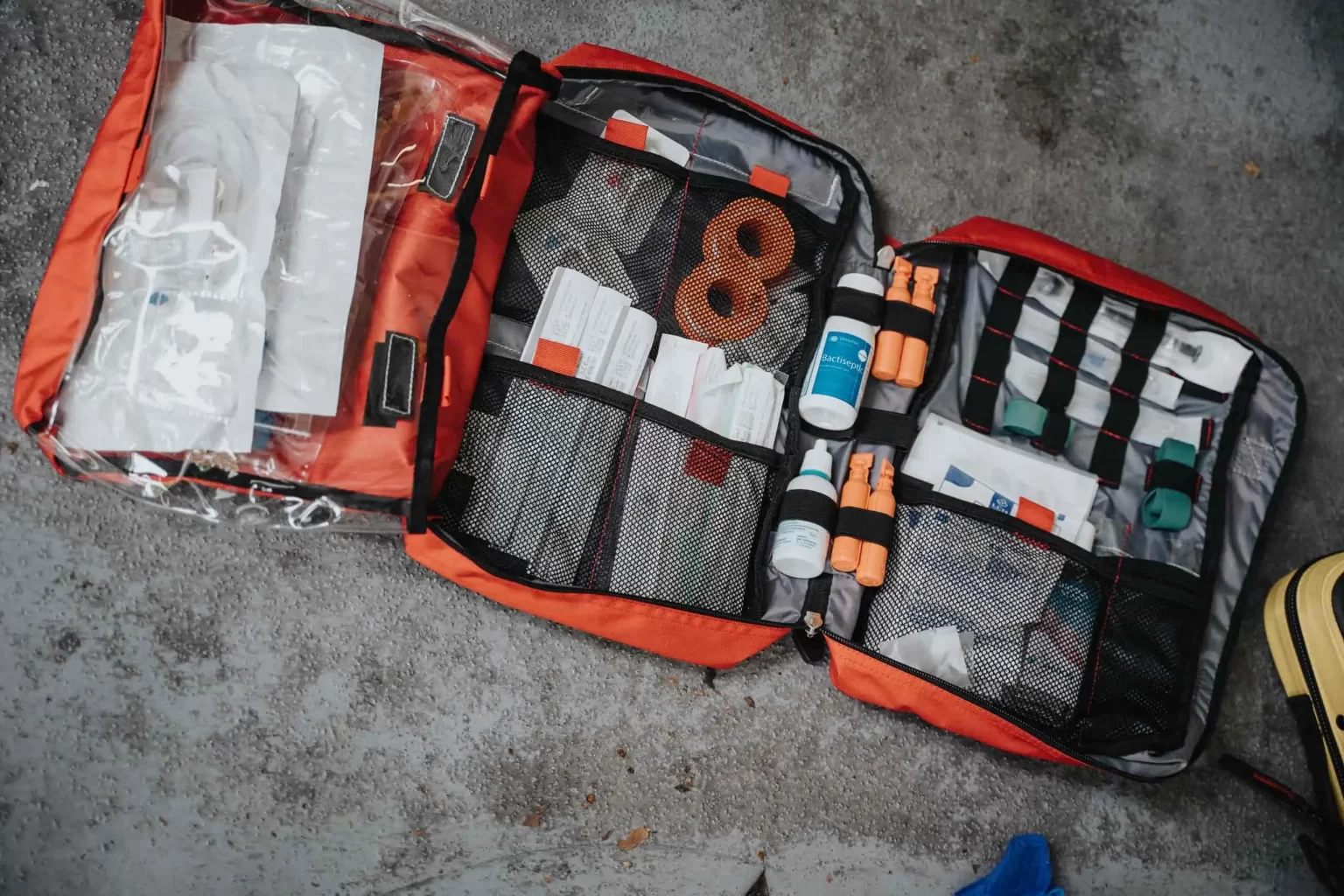Although it is not good to self-medicate, it is convenient that we have basic products and drugs in our first aid kit. But still these 10 items that should be in your first aid kit. We have discussed this below.
How many times have you cut yourself cooking and had to heal the wound immediately? Sometimes there is no time to go to the GP. For this reason, and in situations similar to this, it is advisable to have a complete first aid kit at home.
The health problems that you will have to treat at home at first will be, above all, colds, digestive disorders, cuts, burns, joint pain, and headaches. In this article, we tell you all the basic products you will need.
10 items that should be in your first aid kit
It is important to have a well-stocked first aid kit at home to deal with accidents and minor injuries. Remember to lock and store the first-aid kit in a cool, dry place, out of the reach of children.
1. Antiseptic
10 items that should be in your first aid kit.
It is essential to have an antiseptic in case of cuts. The use of antiseptics such as chlorhexidine reduces the risk of infection in open wounds.
2. Band-Aids
Once we have applied the antiseptic, the ideal is to cover the area to avoid rubbing against surfaces that can dirty or irritate it. For this, it is convenient to have different sizes and models of plasters for different parts of the body.
3. Gauze
They are useful to stop bleeding, but also to apply antiseptic to wounds. By coming hermetically sealed, we make sure that they are free of germs. They are essential items to have in a first aid kit.
4. Adhesive tape
It is a material that we will use to fix gauze to the skin after covering a wound. It will also help us to securely close the bandages.
5. Bandage
10 items that should be in your first aid kit.
Sometimes it is indicated for muscle or ligament injuries, such as a pull or sprain. Immobilizing injured limbs can reduce pain and in some cases prevent a sprain from getting worse.
You can use it to make a first sling in case of injury to the upper extremities, which can relieve the pain on the way to the emergency room.
The usefulness of bandages is limited to treating more serious injuries. If you suspect that you may have a fracture, go immediately to the emergency room.
The usefulness of bandages is limited to treating more serious injuries. If you suspect that you may have a fracture, go immediately to the emergency room.
6. Scissors and tweezers
10 items that should be in your first aid kit.
We are not talking about any scissors, but scissors for medical use prepared for this purpose. The same goes for the tweezers.
For the conservation of both utensils, we will reserve a particularly clean space in the medicine cabinet, although before storing them we have disinfected them.
7. Digital thermometer
10 items that should be in your first aid kit.
It is preferable to use a digital thermometer rather than a traditional mercury one, they are safer. They are also more accurate and practical: they notify us when the temperature is taken.
In addition, they have the advantage of coming in different formats to be used on the forehead or in the ear, something that is greatly appreciated by children and even by weak adults.
8. Anti-fever pain relievers
No medication cures flu or other viral processes. However, what we can do is treat the symptoms.
Paracetamol and other pain relievers are useful drugs to reduce and control bothersome flu symptoms, such as fever and joint pain.
9. Anti-inflammatories
Non-steroidal anti-inflammatory drugs, such as ibuprofen, are pain relievers that work by reducing inflammation in the painful area.
If our throat or back hurts, for example, anti-inflammatories can be more effective than a normal analgesic if there is an inflammatory process in the area that hurts. But it is important to know that they are not harmless drugs and can have serious side effects if taken frequently.
Check with a doctor or pharmacist if you take anti-inflammatories often.
10. Antiemetics and antidiarrheal
10 items that should be in your first aid kit.
We cannot forget to add antiemetic and antidiarrheal to our first aid kit.
If the vomiting and diarrhea are the results of the stomach flu or viral gastroenteritis, antidiarrheal or antiemetics can help us control the symptoms and avoid dehydration. Although in these cases it is best not to intervene, if the symptoms are extreme, drugs can alleviate them.
However, if you have a fever, malaise, and abdominal pain, it is not recommended that you use them. These symptoms may indicate a bacterial infection, in which case stopping diarrhea or vomiting may be counterproductive.
These were the 10 items that should be in your first aid kit.
See a doctor as soon as possible if diarrhea or vomiting is so extreme that you need medication to treat it.
See also: Symptoms of a stroke in women




